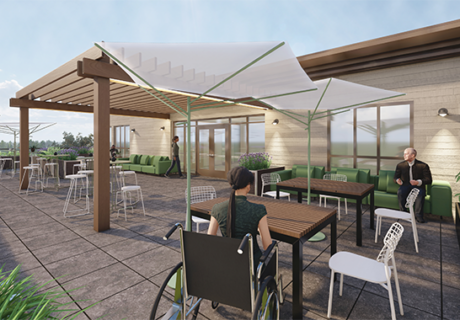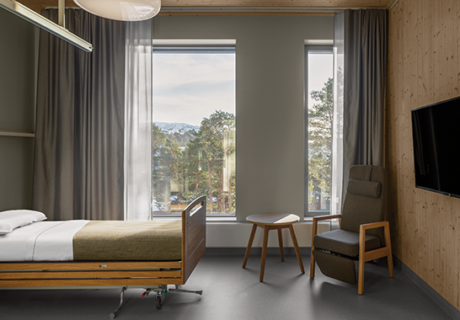PHOTO TOUR: SUNY Upstate Cord Blood Bank
Upstate Cord Blood Bank, a 20,000-square-foot facility located at the SUNY Upstate Medical University campus in Syracuse, N.Y., is one of only two cord banks in New York. Funded by a $15 million grant, the facility needed to fit the needs of the university’s program, economic efficiency standards and budget.
The goal: Design and create a facility that could carry out the essential services and research of umbilical cord blood. The blood, donated by families after childbirth, is stored at Upstate Cord Blood Bank until it is needed by a patient or for research purposes. The building contains a complete glass wall exterior, affording transparency of laboratory functions, and features a centralized liquid nitrogen system to successfully store the blood.
The facility is open 24 hours a day, 365 days a year, resulting in high energy costs. Therefore, the building was placed within a perimeter corridor on the SUNY campus for better temperature and humidity control. The interior utilizes airlocks at lab entry points and variable air volume boxes to assist with temperature control and energy efficiency. In addition, the building contains a green roof, which retains 100 percent of storm water.
Initially, the grant given to SUNY for the facility assumed the structure would need to be 30,000 to 35,000 square feet. However, the Francis Cauffman design team was able to reorganize the facility’s necessities, resulting in a 20,000-square-foot design, meeting the challenge of a tight budget. As a result, the economic efficiency of the building allowed for the implementation of a simple HVAC system that meets FDA and state requirements.
Today the Cord Blood Bank is a central repository for cord blood cryostorage and distribution in the state of New York. Although modest in design, SUNY and the design teams strived to create a facility that embodies the goals of SUNY Upstate in stem cell research and the development of life-saving treatments.
In addition to Francis Cauffman, SUNY enlisted the services of BuroHappold Engineering, Leslie E. Robertson Associates, The Pike Company, Environmental Design & Research, and Murnane Building Contractors Inc.











